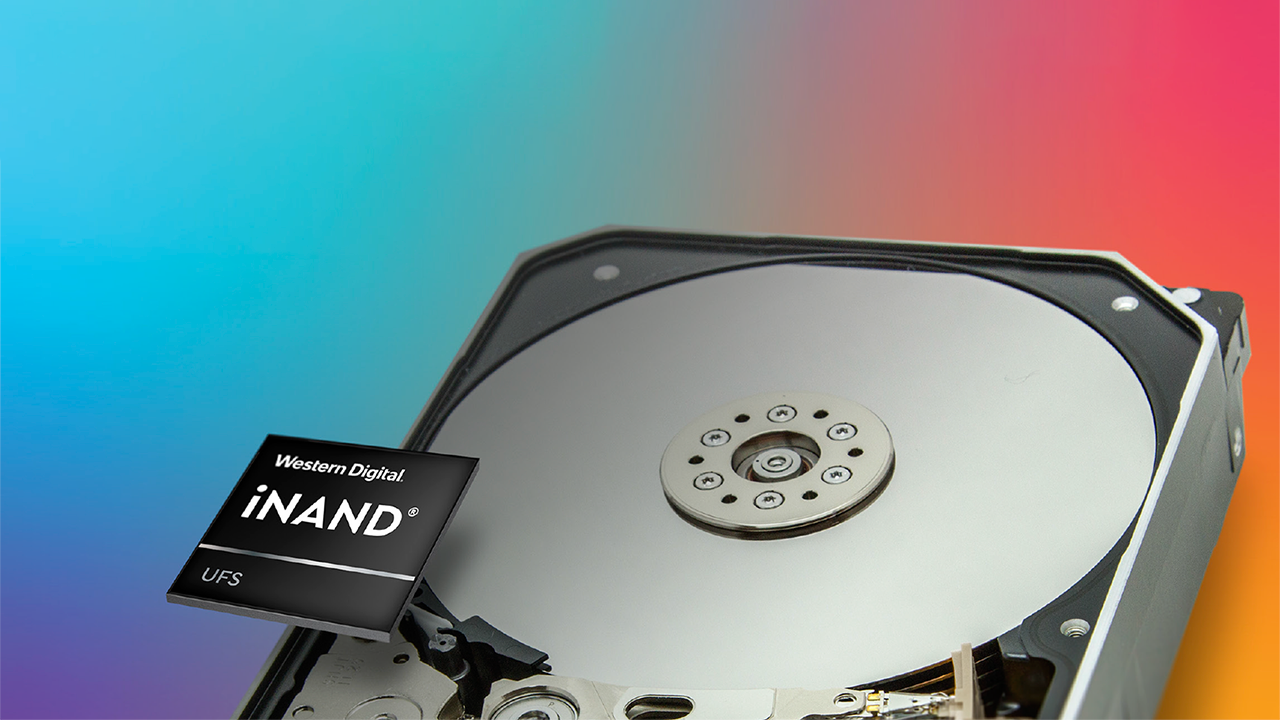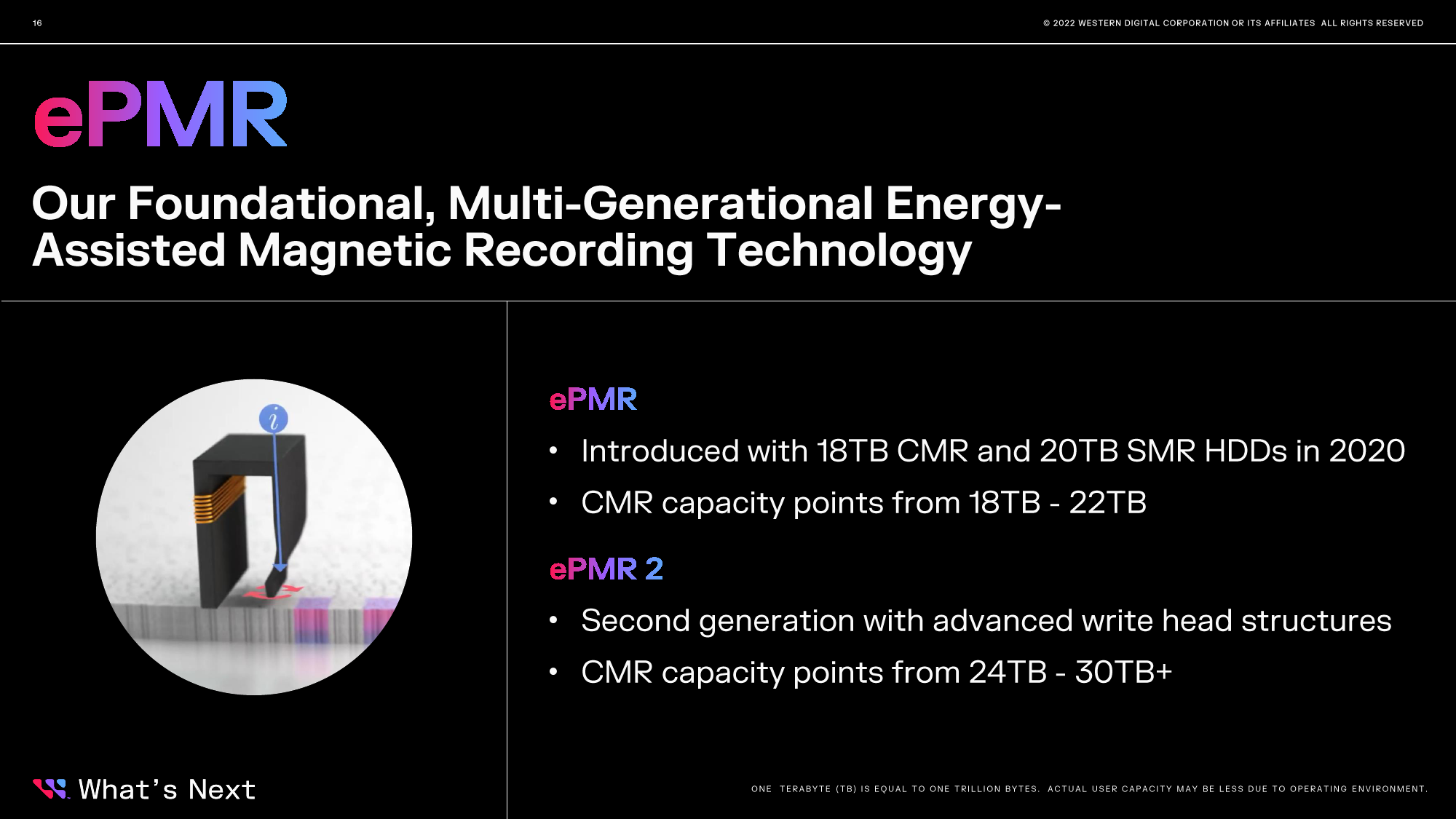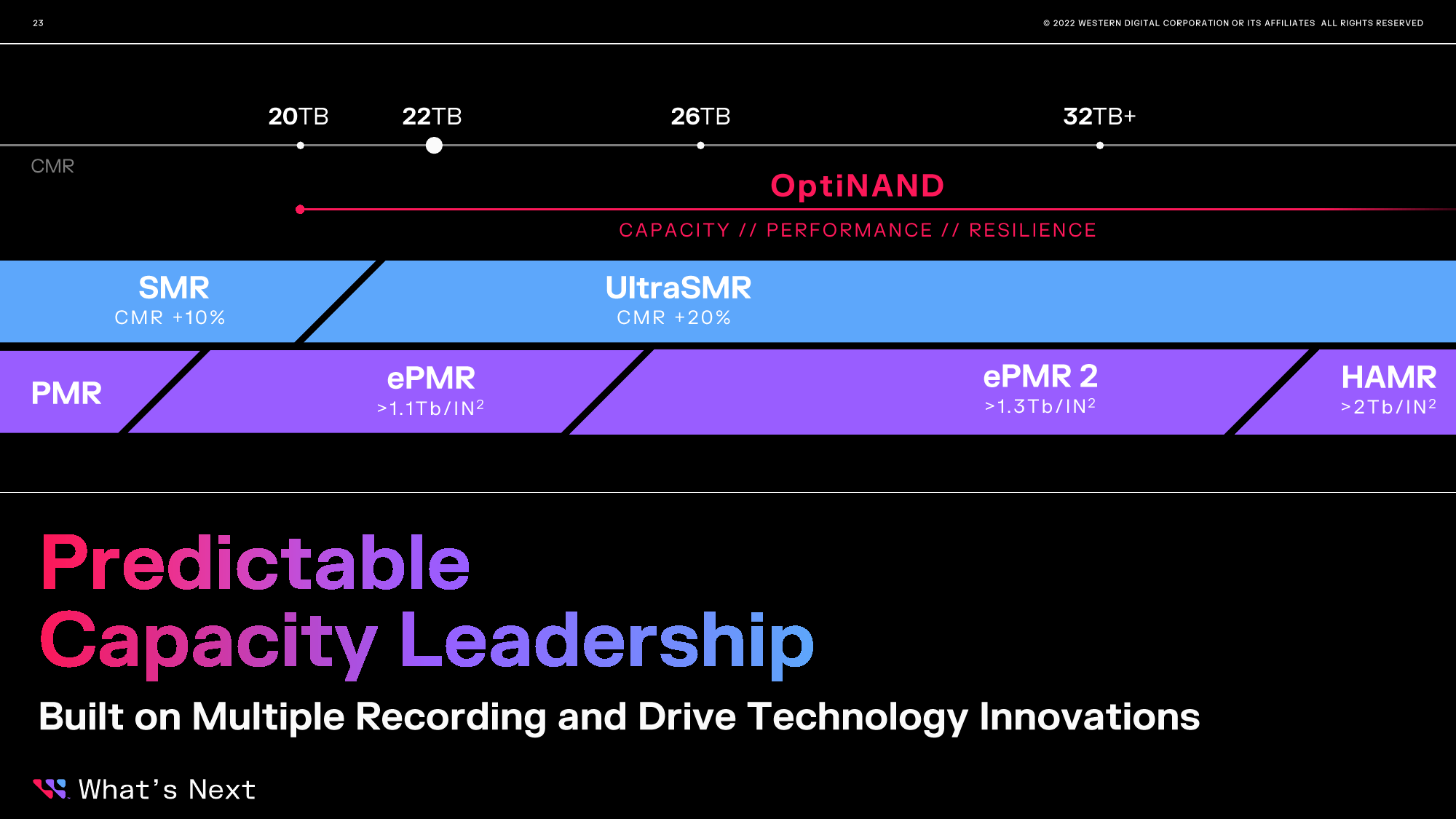
Western Digital is set to begin sampling its 28TB nearline hard drive (HDD) designed for hyperscale datacenters in the coming weeks, the company revealed at its earnings call. The HDD will employ the company's energy-assisted perpendicular magnetic recording (ePMR) and UltraSMR (shingled magnetic recording) technologies to deliver the unprecedented capacity.
"We are about to begin product sampling of our 28 TB UltraSMR drive," said David Goeckeler, chief executive of Western Digital, at the conference call with analysts and investors (via SeekingAlpha). "This cutting-edge product is built upon the success of our ePMR and UltraSMR technologies with features and reliability trusted by our customers worldwide. We are staging this product for quick qualification and ramp as demand improves."
An intriguing aspect of Western Digital's 28TB HDD is that it relies on the company's 2nd generation ePMR technology with refined write heads to enable higher areal density and thinner tracks. As Western Digital's UltraSMR technology boosts areal density of a conventional magnetic recording (CMR) media by about 20%, the company needs a 24TB HDD to build a 28TB UltraSMR drive. The company's roadmaps indicate that the company planned to begin using its ePMR 2 technology starting at 24TB CMR HDDs, so this is likely to be the case here.

Western Digital is currently shipping its 26TB UltraSMR hard drives, introduced over a year ago, to a select clients among hyperscalers. The qualification process for these UltraSMR drives naturally took some considerable time, due to the need for hyperscalers to understand the new technology's behavior and performance since UltraSMR uses a host of hardware, firmware, and software innovations. This learning curve suggests that the upcoming validation and qualification of Western Digital's 28TB hard drives should proceed smoothly and presumably quicker.
Western Digital's 28TB hard drives will contend with Seagate's 32TB hard drives, which utilize heat-assisted magnetic recording technology (HAMR). Seagate's product, which is being evaluated right now, is expected to ramp in early 2024, promising higher capacity and performance, particularly in write operations. However, Western Digital's hard drives are more familiar to its clients who already use its SMR and UltraSMR drives, which could potentially provide a competitive advantage.

Since Western Digital's HAMR-based hard drives are at least 1.5 years away, the company is poised to use a combination of its ePMR 2 and UltraSMR technologies to provide higher capacity points in the coming quarters.
"So, the next step on the roadmap [is] driving from 20TB to 30TB+ with a set of technologies around ePMR, OptiNAND, Ultra SMR," said Goeckeler. "We still have a couple of more steps to go."







